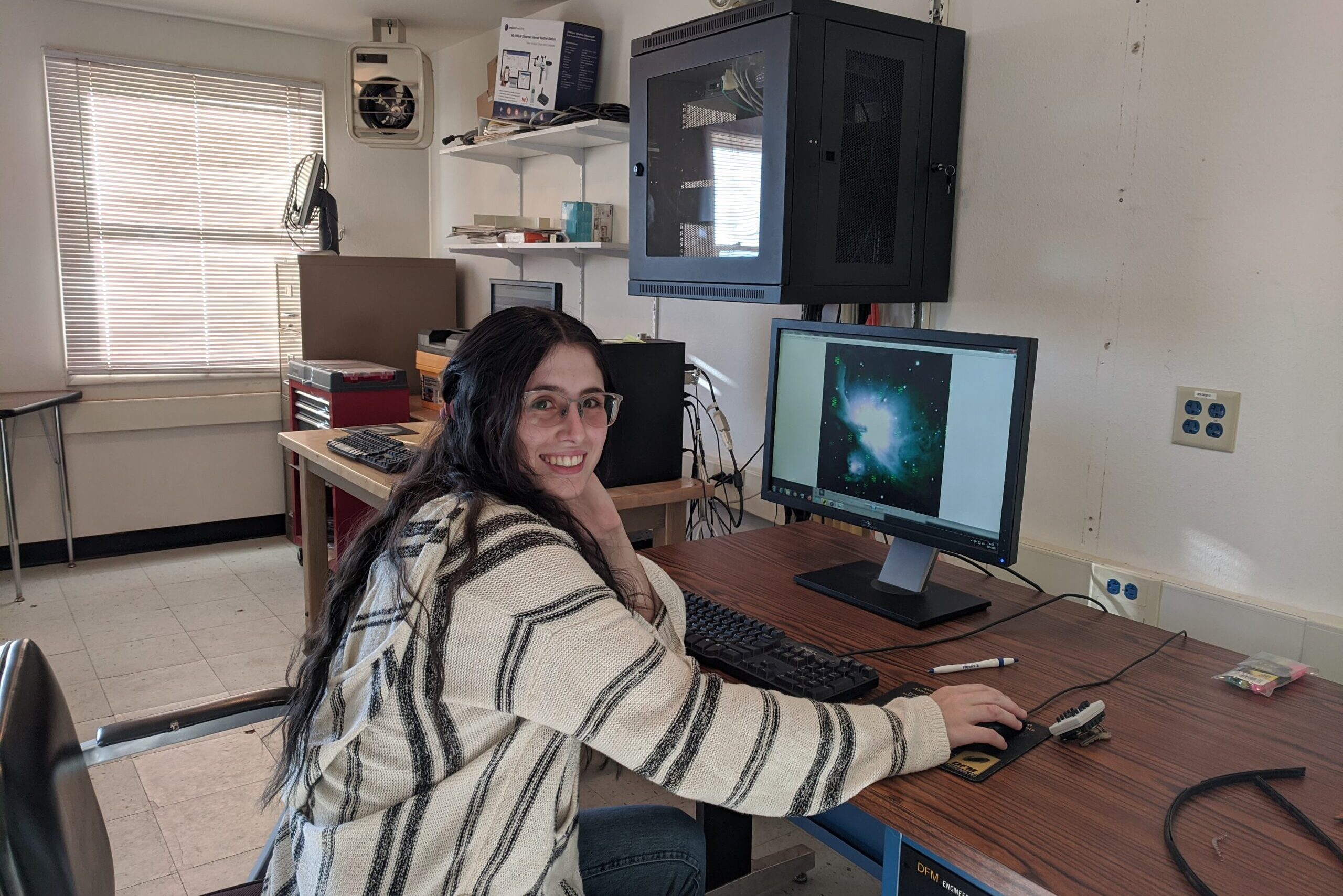Student Highlights: Tera Swaby
— MEET TERA —
Class: Sophomore
Major: Physics
My name is Tera Swaby. Originally from Aurora, CO, I came to Laramie, WY for college because of the great outdoors and amazing research opportunities available to undergrads. I’m also a member of the UW Symphony and Chamber Orchestra as a viola player and I play for the UW club tennis team. My major is physics with a minor in computer science. I fulfill my interest in astronomy with the research I do at the Red Buttes Observatory south of Laramie.
— TERA’S RESEARCH —
At the observatory, my research team and I observe transiting exoplanets in collaboration with Penn State University. Exoplanets are planets in stellar systems outside our solar system. As they orbit their respective stars, information can be gathered to determine their characteristics such as size, temperature, mass and more.
In particular, we are able to provide the folks at Penn State with light curves of the exoplanets. To generate a light curve, our telescope must observe an exoplanet throughout the night. As the exoplanet transits in front of its star, it blocks out some of the star’s emitted light. We are then able to generate a light (or brightness) curve based on these observations.
The light curve can be used to determine the planet’s radius and size. These two characteristics hint at other planetary characteristics when compared with planets of our own solar system. Typically, the exoplanets we observe end up being gas giants about the same size of Jupiter.
ABOUT STUDENT HIGHLIGHTS
Every year, we award fellowships to graduate and undergraduate students attending the University of Wyoming or one of Wyoming’s community colleges in order to provide them with the opportunity to do “real” research. Occasionally, we feature one of these students and their research on this blog. For more information about our student fellowships, visit our College Programs page.




